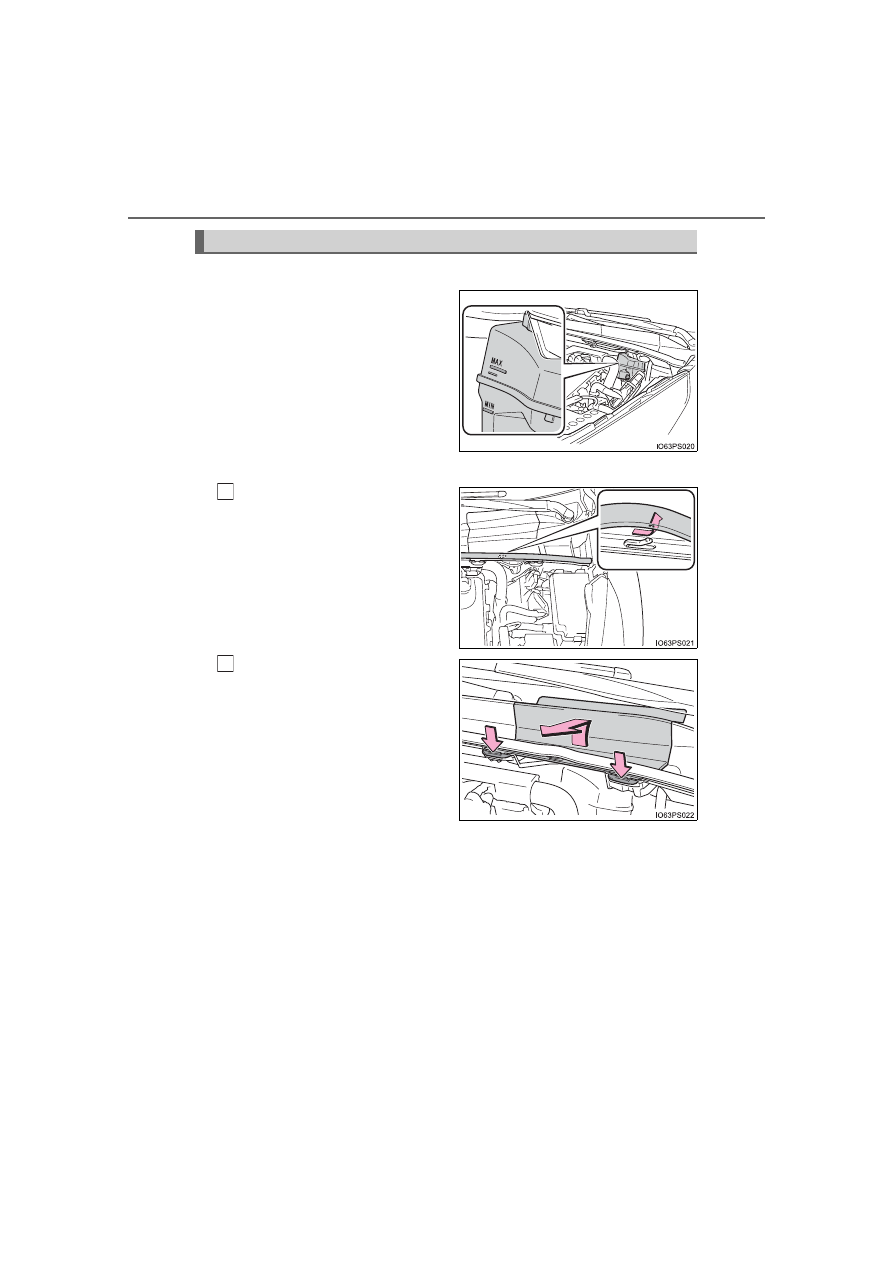Toyota Prius (2021 year). Manual in english - part 9

528
PRIUS_OM_OM47E09U_(U)
6-3. Do-it-yourself maintenance
■
Checking fluid level
The brake fluid level should be
between the “MAX” and “MIN”
lines on the tank.
■
Adding fluid
Slide and lift up the rubber
strip to partly remove it as
shown.
Disconnect the claws and
remove the service cover.
Brake fluid
1
2